#west indian jewelry
Text
Vintage Jamaica West Indian Snake Eyes Sterling Silver Bangle Bracelet by Carib-Craft Sterling

Such a wonderful and traditional, thin solid sterling silver, snake eyes, West Indian bangle bracelet! This beautiful Jamaican bracelet (also called a “Bayra”) has a uniquely engraved, 1 5/8-inch pattern design on each side of the solid silver and has two dotted pointy ends on the tips.

The beauty of Bayras is that it is pliable and can open and close to securely surround almost every wrist. West Indian Bangle Bracelets are a culturally significant tradition of the Caribbean Islands in order to pass on the West African and East Indian heritage, and to symbolize union, love and strength.
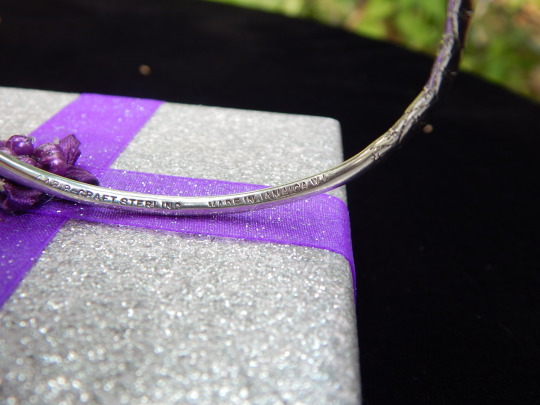
West Indian jewelers have been creating such high quality, handcrafted, timeless works of art throughout the Caribbean, utilizing the same jewelry crafting methods islanders have been using for centuries and it is demonstrably evident in this magnificent bracelet. This beautiful bracelet is a terrific keepsake of Caribbean culture and heritage and helps keep the Caribbean spirit alive wherever you are!
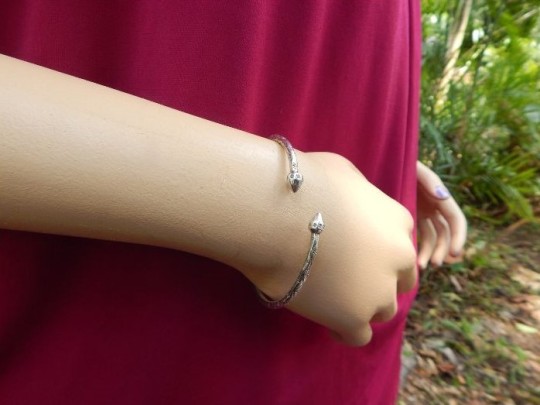
#west indian#west indian bangle#west indian bracelet#jamaica#jamaican bangle#jamaican bracelet#bangle bracelet#bayra#west indian bayra#carib craft#jamaican jewelry#caribbean#caribbean culture#caribbean heritage#caribbean jewelry#west indian jewelry#west indian heritage#west indian culture#etsy#vintage bracelet
0 notes
Text
getting 13 chapters into a fic and then noticing the author made a historical fact error and it would be fine if it wasn’t something you had already hyper fixated on
#magpie chirps#not gonna make a comment about it but#wampum is from the eastern woodlands tribes the Wampanoag being the most famous for it#and quahogs didn’t exist out in the plains lmao#i suppose the argument could be that it was traded but we don’t have evidence that the trade system would have allowed it to go that far#west in the 1800’s#it’s such a small thing but plains Indians had cool art and jewelry too!!#you didn’t have to make the necklace a wampum necklace!!
2 notes
·
View notes
Text
The Allure of Indian Jewelry Wholesale: A Captivating World of Elegance and Tradition

This article delves into the enchanting world of Indian jewelry wholesale, exploring its uniqueness and why it continues to be a sought-after choice for jewelry lovers. For more details, read this article now!
#Indian jewelry wholesale#Indian jewelry#jewelry wholesale#india#west bengal#wholesale jewellery#wholesale fashion jewelry#wholesale cz jewelry suppliers#wholesale jewelry india#wholesale jewellery india#fashion jewellery wholesalers#wholesale jewellery online in india
0 notes
Text
Okay, so I have spoken about misconceptions and issues with the exotification of belly dancing before on this account but another issue that is conjoined with this is the nonsensical and fetishistic gaze that jewelry from Asia and Africa are often presented with. As someone whose special interest is traditional jewelry, I see this often.
The problems with the amount of Belly dancer-esque art on this website and beyond is not only about how Belly dancing has been sexualized and far removed from its origins and meaning but because traditional clothing and jewelry also become subject to fetishization within this art and performance - this has been happening for hundreds of years - and it’s an echo of colonialism and racism.
What are some examples of this?
Probably the easiest way to find examples is just by looking up “tribal belly dance jewelry” - this will show you results of hundreds of different types of jewelry from all over (though most commonly Romani, Yemeni, Afghan, Turkmen, Palestinian, Indian, Kabyle, and Kel Tamasheq jewelry) all being sold under the label of “belly dance garb” to primarily white buyers regardless of how different the cultures or practices are - Orientalism homogenizes cultures and sells an exotic fantasy.
Below is a listing for a “Belly dance headdress” but it is actually a Palestinian heirloom, it is not worn for belly dancing or appearing sensual to an audience, it’s a ceremonial headdress for weddings with talismanic properties.

Most of what people draw or take inspiration from for belly dancer-esque art and performances is an amalgamation of different cultures with little to no understanding of what the jewelry is for, what contexts it exists in, and where it is from.
In the realm of West Asian jewelry, a lot of pieces are not only a display of wealth but often have magical/talismanic/religious prosperities. This is another reason why adding these pieces on a drawing which is intended to appear “sensual” is deeply inappropriate. I’ve seen some artists include a hirz necklace (a style of jewelry used throughout West Asia) which are purely religious and contain verses from the Holy Quran within them - so no, not appropriate (none are appropriate but this one especially so). Everything has meaning.
Example:

Traditional jewelry from cultures that are not yours is not free range to sexualize and apply to exotic fantasies, this kind of perception has real consequences. It isn’t just an “I drew it in art and it can’t hurt anyone”, it’s a connected issue. As a Palestinian, I often see Palestinian artifacts (which are mostly stolen and their original owners will never see their belongings again) being added to a belly dancer’s collection for their “tribal dance” act because of the orientalist association with sensuality.
For anyone who wants more context about Belly dancing (raqs baladi/sharqi) to better understand this post - this article explains a lot and part of the history involved - belly dancing, to many of us, was an expression of joy and never meant to be sexualized. Again, the sexualization of the dance has consequences for us.
I’m not going to call out any particular artist or person here since the point of this post is just to explain and talk about why these portrayals are bad and harmful. Please don’t tag anyone but share the information along to them, cultures are not playgrounds.
#this is a very foundational understanding of the issue but i didnt want to write an essay#I know this is from a mainly Palestinian perspective but others are welcome to include or add on#asia#africa#cw Fetishization#orientalism#orientalism discussion#long post
2K notes
·
View notes
Text
(South) Indian Harry Potter Headcanons:
Harry knew he was Indian (mostly because the Dursley’s used to say racist shit to him) but he didn’t know where in India the potters were from until he went to Hogwarts. He finds out from the Patils, who were close with the potters because desis stick together.
The Patils are from the north and use Hindi to speak to each other. Neither of them knows Telugu/Tamil/Marathi/Malayalam/insert Southern language of choice here (I personally headcanon Telugu because it’s the only Indian language I speak and because there’s a huge diaspora of telugumandi in the west, but feel free to choose whatever you’d like). So Harry has to rediscover his heritage language on his own.
He also studies Sanskrit, and it opens up a HUGE world of spells that they don’t teach at Hogwarts (because of course Indian wizards don’t do spells in Latin). He and the Patils know a bunch of spells that nobody else does.
Harry’s pleat game is ON POINT. It makes sense, since he had to do all the chores at the Dursley’s and that includes perfectly folded and ironed laundry with the edges aligned neatly, or else he would risk being punished. But the result is that if you want your saree drape to pass the inspection of even the most judgemental auntie, you go to Harry to help with your pleats.
Even when they’ve graduated and all have their own homes, it’s a pretty regular sight for the Patil twins to come through Harry’s floo, half dressed, to have Harry pleat their sarees or their lehenga dupatta for them.
Harry LOVES spices. The dursleys only liked bland food, but Harry has always liked flavorful foods, and has no problem with (hot) spicy food either. He uses lots of spices in his own cooking now. His food is very flavorful, but when he’s cooking for himself, it’s too spicy for all his friends (even the Patils). So nobody can eat his leftovers unless he was specifically cooking with other people in mind. Ron learned this the first time he rummaged through Harry’s fridge after a night of drinking. Now Harry labels all his food as to whether or not it’s “Harry spicy”.
James LOVED to buy Lily sarees. He’d order them with custom, wizard-themed designs from weaving villages in south India. The women who made them assumed he was just very imaginative, so he wasn’t violating the statute of secrecy since saree patterns are often vibrant and unique. Harry finds some of them in the old potter manor, and they still smell like the perfumes and scented oils his mother would wear when James took her to the local temple for Hindu holidays.
Indian witches often store extra magic in or enchant pieces of their copious jewelry with spells that can keep them safe if they’re ever in a situation where they don’t have their wands. stuff like, each bangle can function as an emergency portkey that can take you to different safe locations if you say the activation word, or ones that create an instant magical shield when you tap them. Harry finds some of his mothers gajulu, gives them to his female friends.
He ties Rhaki on Ron and Neville, and all the weasley boys. Ron was the first person he ever tied it on, because Ron was the first person who he ever bonded with, and his closest brother.
Harry always cooks idli sambar or dosa for his friends for breakfast the next morning after a night of drinking together, and it’s the perfect hangover food because it definitely brings you back to full alertness/knocks the last bit of post-hangover grogginess right out of your system.
Harry’s parselmouth abilities are valued in his native culture because of the sacredness of snakes in Hinduism, and it comes to be something he’s really proud of (personally I think the ‘parselmouth connected to the horcrux’ thing is dumb, so I’ve always imagined Harry was just naturally a parselmouth).
As the number of Indian immigrants/expats continues to grow after they graduate, Harry helps some of his students (he’s the DADA teacher) start the Hogwarts “South Asian Student Union”.
He always has snacks out for his students when they come to visit his office hours, and they’re all Indian snacks and sweets. His personal favorite is kaju barfi, but he always has a good variety of both sweet and spicy treats, especially for stressed out owl and newts students.
He collaborates with Hermione, who works in the ministry, to make it mandatory for Hogwarts students to a “foreign magical language” course so they can broaden both their minds and their spell repertoires. Padma Patil becomes the “Sanskrit Spells” teacher, and Seamus teaches “Irish Gaelic”. (It took him a little longer to get his course started, since it turns out that at least 40% of Gaelic spells are just increasingly complicated and violent ways to repel the English).
Hermione and Harry also work together to make sure there are employees in the international magical cooperation department who specialize in post-colonial relations, because the magical world also has its issues with that colonialist mindset towards countries that were formerly part of the empire.
Just south Indian Harry embracing his heritage, learning about what was ripped from him, and using it to enact meaningful change in a multicultural magical society.
#mod des#hp#Harry Potter#South Indian Harry Potter#desi harry potter#Tamil Harry Potter#Telugu Harry Potter#Marathi Harry Potter#kannada Harry Potter#diverse magical world#also fuck jkr#Malay Harry potter
310 notes
·
View notes
Text
Coral today is an icon of environmental crisis, its disappearance from the world’s oceans an emblem for the richness of forms and habitats either lost to us or at risk. Yet, as Michelle Currie Navakas shows in her eloquent book, Coral Lives: Literature, Labor, and the Making of America, our accounts today of coral as beauty, loss, and precarious future depend on an inherited language from the nineteenth century. [...] Navakas traces how coral became the material with which writers, poets, and artists debated community, labor, and polity in the United States.
The coral reef produced a compelling teleological vision of the nation: just as the minute coral “insect,” working invisibly under the waves, built immense structures that accumulated through efforts of countless others, living and dead, so the nation’s developing form depended on the countless workers whose individuality was almost impossible to detect. This identification of coral with human communities, Navakas shows, was not only revisited but also revised and challenged throughout the century. Coral had a global biography, a history as currency and ornament that linked it to the violence of slavery. It was also already a talisman - readymade for a modern symbol [...]. Not least, for nineteenth-century readers in the United States, it was also an artifact of knowledge and discovery, with coral fans and branches brought back from the Pacific and Indian Oceans to sit in American parlors and museums. [...]
---
[W]ith material culture analysis, [...] [there are] three common early American coral artifacts, familiar objects that made coral as a substance much more familiar to the nineteenth century than today: red coral beads for jewelry, the coral teething toy, and the natural history specimen. This chapter is a visual tour de force, bringing together a fascinating range of representations of coral in nineteenth-century painting and sculptures.
With the material presence of coral firmly in place, Navakas returns us to its place in texts as metaphor for labor, with close readings of poetry and ephemeral literature up to the Civil War era. [...] [Navakas] includes an intriguing examination of the posthumous reputation of the eighteenth-century French naturalist Jean-André Peyssonnel who first claimed that coral should be classed as an animal (or “insect”), not plant. Navakas then [...] considers white reformers, both male and female, and Black authors and activists, including James McCune Smith and Frances Ellen Watkins Harper, and a singular Black charitable association in Cleveland, Ohio, at the end of the century, called the Coral Builders’ Society. [...]
---
Most strikingly, her attention to layered knowledge allows her to examine the subversions of coral imagery that arose [...]. Obviously, the mid-nineteenth-century poems that lauded coral as a metaphor for laboring men who raised solid structures for a collective future also sought to naturalize a system that kept some kinds of labor and some kinds of people firmly pressed beneath the surface. Coral’s biography, she notes, was “inseparable from colonial violence at almost every turn” (p. 7). Yet coral was also part of the material history of the Black Atlantic: red coral beads were currency [...].
Thus, a children’s Christmas story, “The Story of a Coral Bracelet” (1861), written by a West Indian writer, Sophy Moody, described the coral trade in the structure of a slave narrative. [...] In addition, coral’s protean shapes and ambiguity - rock, plant, or animal? - gave Americans a model for the difficulty of defining essential qualities from surface appearance, a message that troubled biological essentialists but attracted abolitionists. Navakas thus repeatedly brings into view the racialized and gendered meanings of coral [...].
---
Some readers from the blue humanities will want more attention, for example, to [...] different oceans [...]: Navakas’s gaze is clearly eastward to the Atlantic and Mediterranean and (to a degree) to the Caribbean. Many of her sources keep her to the northern and southeastern United States and its vision of America, even though much of the natural historical explorations, not to mention the missionary interest in coral islands, turns decidedly to the Pacific. [...] First, under my hat as a historian of science, I note [...] [that] [q]uestions about the structure of coral islands among naturalists for the rest of the century pitted supporters of Darwinian evolutionary theory against his opponents [...]. These disputes surely sustained the liveliness of coral - its teleology and its ambiguities - in popular American literature. [...]
My second desire, from the standpoint of Victorian studies, is for a more specific account of religious traditions and coral. While Navakas identifies many writers of coral poetry and fables, both British and American, as “evangelical,” she avoids detailed analysis of the theological context that would be relevant, such as the millennial fascination with chaos and reconstruction and the intense Anglo-American missionary interest in the Pacific. [...] [However] reasons for this move are quickly apparent. First, her focus on coral as an icon that enabled explicit discussion of labor and community means that she takes the more familiar arguments connecting natural history and Christianity in this period as a given. [...] Coral, she argues, is most significant as an object of/in translation, mediating across the Black Atlantic and between many particular cultures. These critical strategies are easy to understand and accept, and yet the word - the script, in her terms - that I kept waiting for her to take up was “monuments”: a favorite nineteenth-century description of coral.
Navakas does often refer to the awareness of coral “temporalities” - how coral served as metaphor for the bridges between past, present, and future. Yet the way that a coral reef was understood as a literal graveyard, in an age that made death practices and new forms of cemeteries so vital a part of social and civic bonds, seems to deserve a place in this study. These are a greedy reader’s questions, wanting more. As Navakas notes in a thoughtful coda, the method of the environmental humanities is to understand our present circumstances as framed by legacies from the past, legacies that are never smooth but point us to friction and complexity.
---
All text above by: Katharine Anderson. "Review of Navakas, Michele Currie, Coral Lives: Literature, Labor, and the Making of America." H-Environment, H-Net Reviews. December 2023. Published at: [networks.h-net.org/group/reviews/20017692/anderson-navakas-coral-lives-literature-labor-and-making-america] [Bold emphasis and some paragraph breaks/contractions added by me.]
61 notes
·
View notes
Text
Is Erik South Asian / Indian coded?
This post isn’t going to be as extensive as my other FT posts, but I am going to put out thoughts of mine that have been playing in my head for some time now. Along with my observance of ‘Jellal wearing kohl’ and ‘Why aren’t the ladies of FT wearing panties anymore’ , I have another I want to put out today.
I think Erik (Cobra) of OS/CS is South Asian coded.

Specifically Indian.
I will list the evidence and explain my train of thought underneath.
Admittedly though , a lot of my reasons are for visual representations I have seen of him in both manga and official art, so I am not sure how solid my connections are for the HCs but I will say them either way.
Clothing pattern
Let’s start with the first reason why I believe Erik to be SA coded.
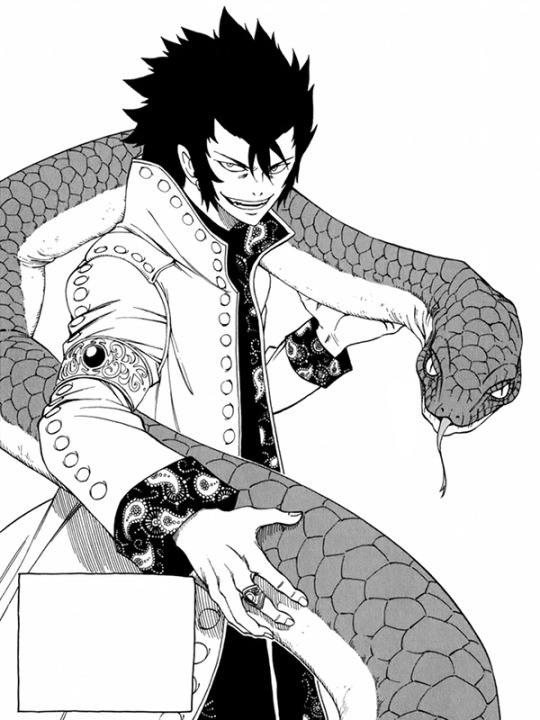
This is an image of Erik/Cobra from the official manga during the Nirvana Arc
Sadly the intricate design of many characters' clothes are omitted/reduced when animating, Erik here being no exception. And though I understand why, it’s a shame as so many details get taken out which could help piece some more information on the characters which aren’t told upfront.
In the manga, Erik is introduced with a piece that includes a paisley design (the teardrop shaped pattern) on the inner parts and cuffs of his coat. Why this is important to note is because the paisley design is something that is known to be a widespread clothing print all across Asia, namely South Asia/South-west Asia!


This Kameez (South Asian tunic) of mine has the ‘paisley’ pattern which is on Erik’s coat

Of course it is possible that the pattern on his inner coat/cuff could just be for the sake of fashion with no cultural significance, but taking in mind my next points I think it makes the argument of Erik being SA/Indian coded stronger.
Jewelry
This may come off as a weaker point I admit, but Erik’s use of jewelry also reminds me of SA heritage. His rings and armlet (or what I learned is called an arm-ring).
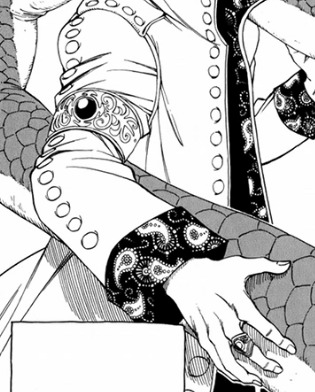
This opinion is purely subjective. I can admit that, but me coming from SA heritage myself, his use of jewelry resonates with the way I've seen it being used in my own culture; such as the design , what patterns it is being paired with, the use of adornment. It really reminds me of SA fashion and tradition.
But I want to be more objective in my reasoning so I looked up why his use of jewelry in the manga does resonate with SA heritage and found some things.
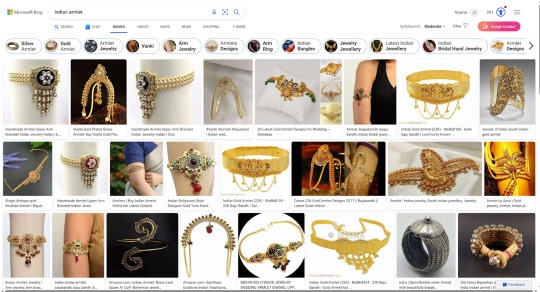
The armlet/arm-ring that Erik has on his coat in the manga is similar to that used in Indian heritage.
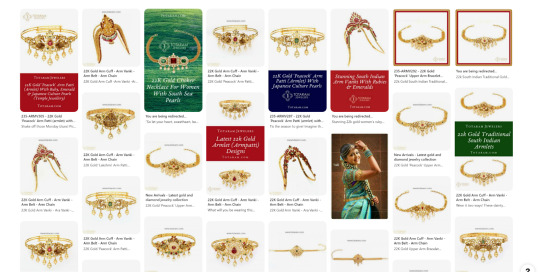
Fair in Indian tradition it’s used as a bridal jewelry (Vanki) for the women, but it was the closest I could find that was similar to what he had for my argument. It might be a reach though and I can accept that.
Now I will go onto my other point as to why I believe Erik is SA/Indian coded.
Salwar in game card
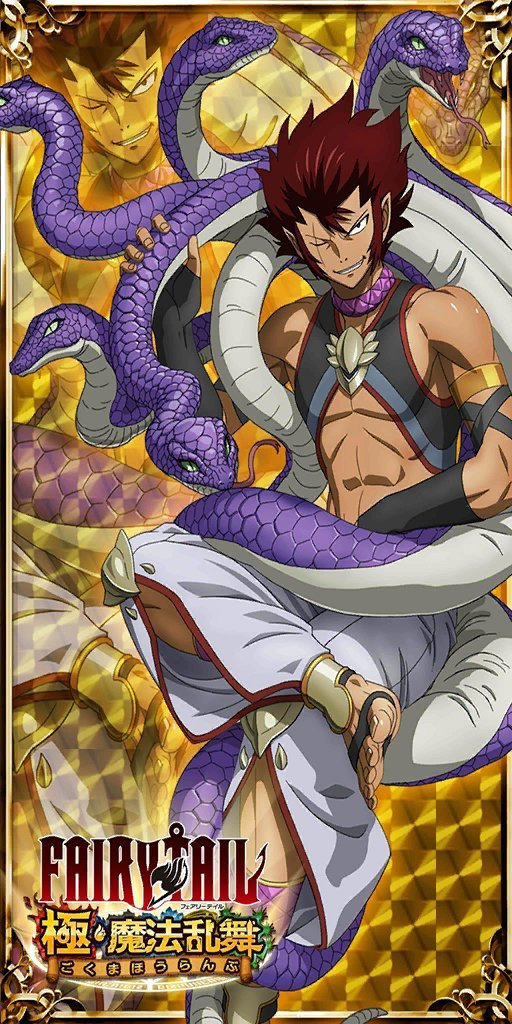
Another clothing observation, but his trouser reminds me of a salwar with a slit at the bottom. The slit is a bit higher than what I am accustomed to but I have seen clothing like this in SA heritage.

It’s not overly common but you can see where the influence comes from-
But let me go onto the main reason I have always thought Erik to have some ties to SA (but specifically India).
Cobra
As everyone knows his name when introduced is Cobra, however what this name also holds significance with, is the fact that India’s national reptile is actually the Cobra too!

King Cobra to be exact!
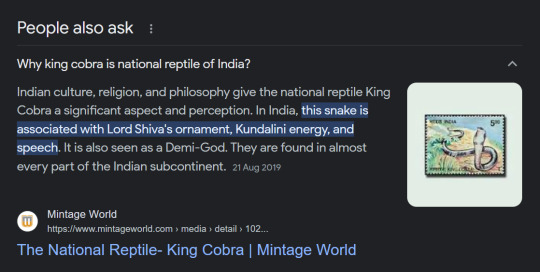
And on top of that in Hindu mythology, the cobra is a greatly respected and revered figure, literally seen as a deity and I believe that ties in well with Erik’s connection with snakes/cobra.

Erik
And the last point I want to make is that even his name can be found in South Asia too , just in case people want to counter the argument that the HC is improbable due to him having a European name.
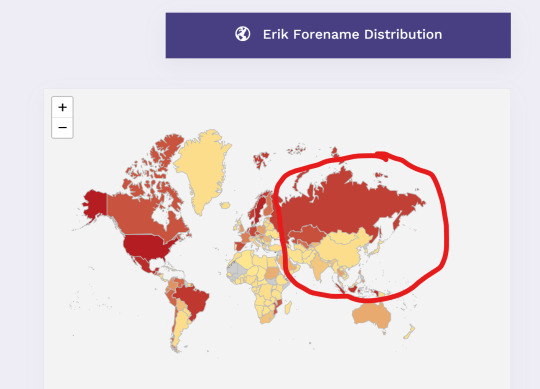
As it can be seen the name Erik can be found near everywhere in the world, predominantly in places with European connections but also in Asia too.
And since I am arguing Erik being possibly Indian coded, I will show the statistics for his name there.

1,386 incidents of the name in the country! That is not a small number even if minute compared to the density of the population.

Map of India with distribution of the name Erik. (the darker red parts show a larger population of Eriks)
It’s very possible though Erik’s name could be from another SA country too. Or maybe he’s a case of being biracial with both SA heritage and something else.
But I could see him being fully SA too since despite the Christian / European origin of the name, there’s a lot of POC who give names like that possibly due to following Christianity or just out of preference! (and personally I know this is a trend in South Asian communities)
But I guess we will never know unless Mashima sheds some light on Erik’s background. ^^'
Now with all this evidence presented, you can judge for yourselves if Erik’s design/clothing and connection to cobras is merely a coincidence and i’m reaching or is he possibly a SA/Indian coded character?

Thank you all for taking the time to read this <3
Also big thanks to @jerzaworms for helping me find some of the evidence to help supplement this post and strengthen the argument of this hc!
#hc#yamishika's hcs#erik fairy tail#fairy tail headcanons#fairy tail#fairy tail HCs#erik ft#fairy tail ethnicity hc#ethnicity hc#oracion seis#oracion seis erik#crime sorciere#crime sorciere erik#indian erik?#south asian erik?#desi erik?#poc erik#indian erik to vibe with my part indian jellal hc#These are all the evidences I could find now#If I find anymore I will add them to the post#But yeah#i lied it ended up extensive and idk how#it wasn’t meant to be this long I swear#Thank you for reading another one of my essays
83 notes
·
View notes
Text
tanzanite
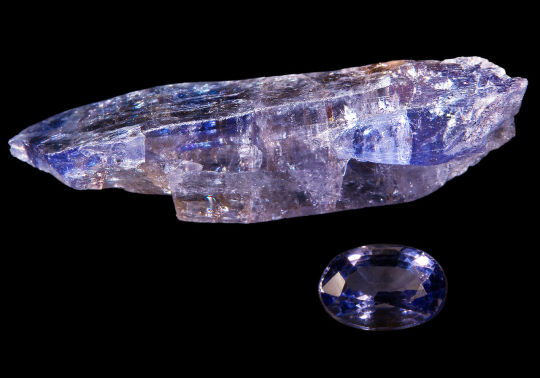
While December babies share topaz with the November babies, November's topaz being golden-brown while December's is blue, December also lays claim to the newly discovered excitement of tanzanite.
Tanzanite, so the legend goes, was discovered by Masai herders in the Merelani Hills near Mt. Kilimanjaro. A lightning strike set the grasslands around the area on fire, forcing the herders to flee with their animals. When the fire had burned itself out and the Masai returned with their herds, they found the ground littered with beautiful dark blue stones (the government of Tanzania recognizes Jumanne Mhero Ngoma as the official discoverer of the gem). The rest of the world wouldn't find out about these stones until 1967 when a Indian prospector named Manuel de Souza, hunting for sapphires or gold depending on which story you go with, either stumbled across some of the blue gems himself or was directed there by the locals. At first he assumed they were olivine but something about them struck him as unique and so he sent some samples to a gemstone dealer friend of his and from that point on things took off. It wasn't long before the gem was discovered to be a brand new jewel. While the official name of the stone is blue zoisite, jewelry dealers knew better. In 1968, the gem was marketed as 'tanzanite' by Tiffany and Co. with the slogan that the rare new gem could only be found in two places in the entire world: "Tanzania and Tiffany's".
And Tiffanys was right. To this day, the rare stone is only found in Tanzania, in the same foothills that it was originally discovered in. There is no where else in the world these gems turn up. While I found 'lab created tanzanite' on etsy, I couldn't find any actual confirmation that the stone has ever been replicated in a lab, just that it has been imitated there. Right now, the entirety of this jewels deposits all exist in one single point, a stretch of land that's four miles long and one mile wide. This area is broken up into four sectors, half given to corporate mining and half to locals. In fact, Saniniu Laizer, a local man, mined the two largest tanzanite stones to ever have been found at 21 pounds(972 kg) and 11 pounds (5.1kg). He sold them to the government for 3.35 million USD.
Tanzanite is measured at 6.5 on the Mohs hardness scale. It is a member of the zoisite family with its natural color being a reddish brown to clear. Heat brings out its blue color which can dip almost into purple with some stones. It also shows different shades of color when viewed from different angles from red-violet to deep blue to yellow-green, though heat treatment will all but eliminate everything but the blue and violet colors and the cut of the gem can enhance a specific color as well. When viewed under cool lighting the gem appear more blue while warm lighting brings out its purple.
As a fairly new stone, to the west at least, tanzanite doesn't have much folklore to go with it. But there is some.
Tanzanite is considered a stone that brings good luck, new beginnings and prosperity. Which, yeah, that makes sense considering. In Tanzania, women that have just given birth wear blue, both their clothes and their jewelry, to give their child a healthy and positive life. Since tanzanite both changes color with heat as well as while it is turned to catch different angles, it is know as 'the stone of transformation'. Feng Shui believes that a tanzanite stone can promote peace, tranquility and open communication. It is the gift for 24th wedding anniversaries.
It is also very, very rare and limited. It has the moniker of 'the gemstone of a generation' because when the mines run dry, some guesstimates give less than twenty-five years, the tanzanite we have will be the only trace of it left.
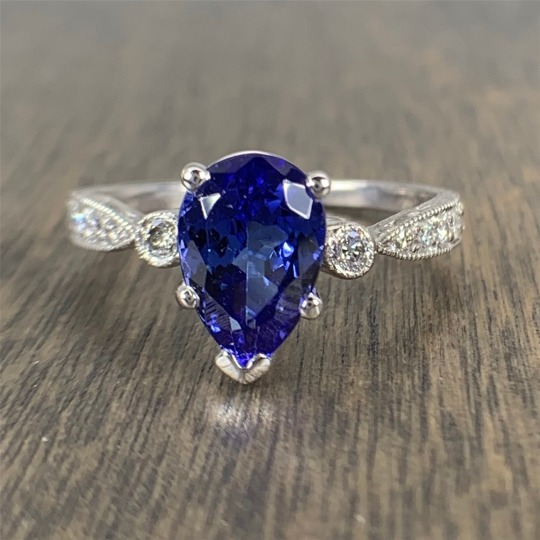
#tanzania#tanzanite#december#birthstone#superstition#folklore#birthday#christmas#jewelry#birth month#tiffany#tiffany and co#ask santa baby
8 notes
·
View notes
Text
Unveiling the Allure of Western Fashion: A Comprehensive Guide to Western Dressing
Introduction to Western Fashion: Western fashion, with its bold aesthetics, timeless appeal, and rich heritage, holds a special place in the hearts of fashion enthusiasts worldwide. From classic denim jeans to elegant dresses and chic blouses, western attire embodies a sense of freedom, individuality, and style. In this comprehensive guide, we delve into the diverse world of western fashion, exploring its evolution, key elements, popular trends, and styling tips.
The Evolution of Western Fashion: Western fashion traces its roots back to the American frontier and the rugged landscapes of the Wild West. The iconic cowboy attire, characterized by denim jeans, plaid shirts, and leather boots, became synonymous with the spirit of adventure and exploration. Over the years, western fashion evolved from practical workwear to a symbol of rebellion, counterculture, and self-expression.
Key Elements of Western Dressing:
Denim: Denim jeans are the cornerstone of western fashion, offering durability, versatility, and timeless style. From classic blue jeans to distressed denim and high-waisted styles, denim remains a wardrobe essential for both men and women.
Plaid: Plaid shirts are another iconic element of western dressing, featuring bold checkered patterns and rustic charm. Paired with denim jeans or skirts, plaid shirts add a touch of casual elegance to any outfit, making them a staple in western fashion.
Leather: Leather boots, belts, and jackets are quintessential accessories in western fashion, exuding rugged sophistication and timeless appeal. Whether embellished with fringe details or adorned with metal hardware, leather accents add a touch of authenticity to western attire.
Cowboy Hats: Cowboy hats are iconic symbols of western fashion, with their wide brims and distinctive shapes evoking images of the American frontier. From traditional felt hats to straw cowboy hats, these accessories add a touch of cowboy flair to any outfit.
Popular Trends in Western Fashion:
Indo-Western Fusion: Indo-western outfits blend traditional Indian elements with western silhouettes, creating a unique fusion of cultures and styles. From embellished kurtas paired with denim jeans to sarees worn with western blouses, indo-western dressing celebrates the diversity of global fashion.
Bohemian Chic: Bohemian fashion draws inspiration from the free-spirited lifestyle of the 1960s and 1970s, featuring flowing silhouettes, floral prints, and eclectic accessories. Maxi dresses, fringe vests, and embroidered blouses are key elements of bohemian chic style, embodying a sense of wanderlust and adventure.
Modern Western Glamour: Modern western fashion embraces glamour and sophistication, with sleek silhouettes, luxe fabrics, and polished accessories. Tailored blazers, satin dresses, and statement jewelry elevate classic western attire to new heights of elegance and allure.
Styling Tips for Western Attire:
Mix and Match: Experiment with different combinations of western and traditional elements to create unique and personalized looks. Pair denim jeans with embroidered kurtas or style a plaid shirt with a leather skirt for a fresh take on western dressing.
Accessorize Thoughtfully: Choose accessories that complement your western attire and add interest to your outfit. Opt for leather belts, cowboy boots, and statement jewelry to complete your look with flair.
Play with Textures: Incorporate a variety of textures into your western outfits to add depth and visual interest. Mix denim with suede, leather with lace, and cotton with chiffon for a dynamic and textured ensemble.
Embrace Versatility: Invest in versatile pieces that can be dressed up or down for any occasion. A denim jacket, white button-down shirt, or little black dress are timeless staples that can be styled in countless ways to suit your personal style.
Conclusion: Western fashion is a celebration of freedom, individuality, and creativity, with its iconic denim jeans, plaid shirts, and leather accents. Whether embracing classic cowboy attire or experimenting with modern western trends, there are endless possibilities for expressing your unique style through western dressing. With a blend of tradition, innovation, and personal flair, western fashion continues to captivate fashion enthusiasts worldwide, inspiring new trends and timeless looks for every occasion.
#fashionreboot#fashion trends#fashion photography#fashion#western wear for women#western wear for girls#western wear dresses#western wear#party wear dress#western
3 notes
·
View notes
Text
Sarojini Nagar Market | Delhi Sarojini Nagar Market
Named after the renowned Indian freedom fighter and poet, Sarojini Naidu, Sarojini Nagar Market stands as a vibrant centerpiece in Delhi’s bustling shopping landscape. This market, a treasure trove for bargain hunters, seamlessly blends history with the eclectic energy of one of Delhi’s most popular shopping destinations.

History and Evolution of Sarojini Nagar
The #SarojiniNagar Market, a name that resonates with the spirit of Delhi’s vibrant shopping culture, owes its identity to the esteemed freedom fighter, Sarojini Naidu. Nestled in South West Delhi, this market is encircled by prominent neighborhoods, including Safdarjung Enclave and Chanakyapuri, the latter being a diplomatic hub with embassies like those of the United States and Russia. Originally christened as ‘Vinay Nagar’, the market underwent a significant transformation, both in name and function, to honor Sarojini Naidu in the 1970s.
Initial Purpose and Evolution:
Originally Built: For the Sarojini Nagar Government Colony residents, catering to their daily needs.
Transformation: From ‘Vinay Nagar’ to ‘Sarojini Nagar’, reflecting its evolution from a local market to a bustling shopping destination.
Diverse Offerings: Known for its export surplus garments, stylish outfits, and fabrics at unbeatable prices.
Market Structure:
Divisions: Comprising Central Market, Babu Market, and Sabzi Market.
Shop Count: Central Market houses 200 shops, while Babu Market boasts 110.
Specialties: Export surplus items including stylish clothes, fake designer bags, and fashionable jewelry.
The market’s inception in the 1950s and its establishment in 1965 marked the beginning of a journey tailored to accommodate the needs of refugees from Pakistan post-Partition. Over the decades, Sarojini Nagar Market has transformed into a pivotal shopping destination, attracting a diverse crowd with its low prices and a wide range of products, thanks to the sale of export surplus from global brands like Zara or H&M. This evolution underscores the market’s role in offering affordable retail options, making it an essential visit for both locals and tourists.
Know More
1 note
·
View note
Text
More on that Gotham Rogues mermaid au
So like a week or two ago I made this post and thought I’d add in what ocean or sea the rogues were caught in and a couple things about their life in the batfam’s aquarium
Edward: South China Sea off the coast of Vietnam, very curious about humans. loves attention and must be constantly entertained or else he escapes his tank and roams the facility, giving him intricate puzzles to solve works best. He loves compliments and responds well to positive reinforcement. Very emotional. He charms anyone he can. Loves getting access to any human media.
Jonathan: originally from the North Atlantic Ocean, Labrador Sea but despite being a deep sea mer he migrated inland and began terrorizing people in Lake Ontario and Lake Erie, he was eventually pulled out of the Ottawa River. likes the dark, scares guests, has a supernaturally terrifying aura, unsettles guests and staff. Has a fascination with any staff that aren’t openly afraid of him. Very persuasive.
Oswald: Found deep in the Bering Ocean off the coast of Russia. Fascinated by birds because they can fly and he thinks that’s the wildest thing. Basically runs a trade system between the other mers the way inmates in prison do. He came up with it and they trade things like food, shells, different “enrichments” from their tanks, things they’ve stolen from staff. Motivated by greed and pride.
Selina: Originally from the middle of the South Pacific Ocean but wandered a little outside the normal range of the Indo-Pacific region and was caught far off the coast of Chile. Is a thief and a flirt, very independent and loves shiny things. Keeps a collection of things she’s stolen from staff members. Prefers to share her tank with a group of at least 5 (non-mer) catfish all of which she has named and become very attached to. Flirts with Bruce for extra privileges.
Ivy: Originally from the the Western Pacific between Japan and Australia, migrated around the world luring men out to sea and was eventually captured in the North Channel between Scotland and Northern Ireland. Tank has tons of plants and is basically an enclosed ocean forest, she doesn’t come out for visitors often and when she does it’s usually for female visitors and staff. Likes to visit Harley and is only handled by female staff.
Harley: From the East Indian Ocean off the coast of Australia, migrated up to the Irish Sea. Very social and talkative. Has a huge crush on Joker obviously. Has two pet dogfish sharks named Bud and Lou of course. Loves when staff provide her with hair ties and supplies to make jewelry out of seashells. Loves interacting with guests.
Joker: No one knows where he came from but he was fished out of the Suez Canal (in case you don’t remember where that is off the top of your head, it connects the Red Sea to the Mediterranean). He’s probably responsible for a number of missing persons cases before being caught. Joker has been obsessed with Bruce from the beginning and is usually extremely violent towards other mers and especially towards staff in an effort to get Bruce’s attention. Once tried to maim Jason. Bruce is the only one allowed to handle him now.
Waylon: Caught in the Gulf of Mexico off the coast of Louisiana. Was occasionally known to eat humans before his capture. Can speak French. Likes to hide in the sand. Is insecure about how plain he looks because he’s less colorful than the other mers.
Zsasz: Found in the Adriatic Sea off the coast of Croatia. Indifferent towards humans and violent towards other mers, especially female mers. This is because he is very nihilistic. Is not allowed any sharp objects. Likes things that most would consider frivolous because he appreciates especially pointless things. Ex: dumb plastic “enrichment” decorations and other such things that shouldn’t be underwater or things that become useless once in water.
Harvey: Originally from the West Pacific and adopted a migration pattern drifting from the West Pacific off the coast of Japan or Australia to the Eastern Pacific off the Coast of Oregon or California, was captured off the coast of California. Very persuasive and also very moody, important that staff knows which side they’re speaking with. Only eats from 2:00-2:22 pm and 2:00-2:22 am. Usually settles disputes between the other mers, unless he’s personally involved with the dispute. Was the Wayne Aquarium’s first mer and knows Bruce very well.
Bane: Found circling Santa Prisca (which I guess is the dc equivalent of Puerto Rico) in the Caribbean Sea. I’ve since decided he’s a bull shark due to the significance of the bull in a lot of Spanish speaking countries. Really hates Bruce and is surprisingly indifferent towards other staff. Really likes to eat puffer fish and will be pissed if they’re unavailable. Has a really thick layer of glass between him and guests.
Jervis: From the English Channel but captured in the Celtic Sea off the coast of Cornwall. Used to lure blonde women into the sea. Flirts with blonde female guests. Speaks in rhyme with a British accent. Alice in wonderland doesn’t exist under the sea but he happens to have similar obsessions anyway. He references things that have an uncanny similarity to wonderland characters and the wonderland plot line. This baffles the staff as they have no idea if he’s referring to mers he used to know or if these people/characters exist at all.
Freeze: Captured in the North Sea off the coast of Germany. Can be surprisingly gentle. Demands very cold water that includes actual ice floes. His mate, a female mer named Nora is in critical condition, he was captured because he brought his mate to the German shore in hopes she could be saved. Wayne Aquarium is working on a cure for her condition.
Most of them low key have an obsession with Bruce or one of the other Wayne’s.
Idk if I want to include the rest of the rogues but for the record... Slade would be obsessed with Dick, Roman with Jason, Ra’s (I think the al Ghuls would be sea snakes) with Tim, and Talia (assuming I include the al Ghuls as mers considering their relation to Damian) would behave very motherly towards Damian (who I guess in this au if the al Ghuls are mers would simply have an unnamed Arabic mother).
I also headcanon that female mers are typically more dominant in mer society which is matriarchal, females are typically larger and more likely to cooperate with each other and form a large group (hence the Gotham city sirens). Males are smaller and more likely to fight each other.
Anyway these headcanons are free to use and I’d love to hear any additions
#mermay#dc comics#batman#batfam#mermaid au#batman villains#gotham rogues#edward nygma#mr freeze#victor zsasz#bane dc#poison ivy#jervis tetch#selina kyle#harley quinn#the joker#harvey dent#killer croc#oswald cobblepot
60 notes
·
View notes
Text
Vintage Jamaica West Indian Sterling Silver Bangle Bracelet Bayra by AC Sterling
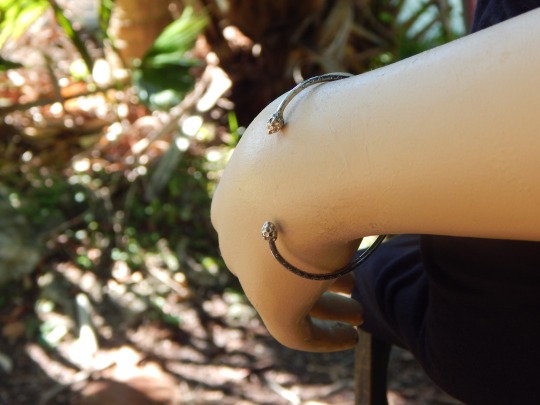
Such a wonderful and traditional, thin solid sterling silver West Indian bangle bracelet! This beautiful Jamaican bracelet (also called a “Bayra”) has a uniquely engraved, 1 5/8-inch pattern design on each side of the solid silver and has two textured ends on the tips. The beauty of Bayras is that it is pliable and can open and close to securely surround almost every wrist. West Indian Bangle Bracelets are a culturally significant tradition of the Caribbean Islands in order to pass on the West African and East Indian heritage, and to symbolize union, love and strength.

West Indian jewelers have been creating such high quality, handcrafted, timeless works of art throughout the Caribbean, utilizing the same jewelry crafting methods islanders have been using for centuries and it is demonstrably evident in this magnificent bracelet. This beautiful and lightweight bracelet is a terrific keepsake of Caribbean culture and heritage and helps keep the Caribbean spirit alive wherever you are!
#caribbean#west indian#west indian jewelry#caribbean jewelry#bayra#jamaica#jamaican jewelry#jamaican bracelet#yardi#yardie#Kingston#bangle bracelet#West Indian bangle bracelet#AC Jamaica#Caribbean culture#West Indian culture#etsy#vintage bracelet
0 notes
Note
Random, but maybe long shots are the best shots: in Brooklyn visiting the Ladywife's family...and its also our anniversary, the 8th. I would love a place that has copper jewelry. Any suggestions? Preferably black, brown owned, even better West Indian???
Well, can't speak to whether this would fit your tastes or not, but one of my favorite little shops in my (old) neighborhood is Yanatiba, in Crown Heights. It's more of an antique/curio shop than anything else, but they have a lot of unique jewelry too, by local Black artists in most cases. And the proprietors are sweethearts. Might be worth a look.
11 notes
·
View notes
Note
3, 5, 23 (I am curious about your orientation towards jewelry now!)
Ok for the speed round -
a specific color that gives you the ick? Look I love all colors but I def like some browns, yellows and greens way less then other colors. I don't know if I could name a single one but in general I do not have a good time looking at 'muddy colors'
favorite form of potato? The easy answer is french fry. The long answer is that a restaurant that I sorta grew up in does a version of scalloped potatoes that I lose my mind over - but when I say Vincent Potatoes people don't know what I mean. And then they try and make cheesy potatoes but I like Vincent potatoes cause there is no cheese.
do you wear jewelry?
Ok so as a trans masc person I have a LOT of complicated feelings about jewelry. I used to hate it because I was always given costume jewelry as a 'little girl'. But growing up I wore Culturally Significant Jewelry - namely gold and silver bangle bracelets because my mothers family is from Barbados. I adored them, mainly because as a White American I simply did not have a lot in the way of culture to be proud of. They were distinct, no one else wore anything else like this cause it's not like there was a huge west indian island population in my state. This is slightly off topic but they served as an Early Warning System for my mother. Not only could I find her in a crowded store based on the jangle, but I also knew when she was walking down the hallway and about to lift up her hand to turn my doorknob lmao
Thing is though only women wear these. Full stop, this is not a tradition for men in my family at least. When I transitioned, I took them off for the first time in years. If I'm honest I miss them but there is a part of me that is afraid I have to choose between these bracelets that were such a part of Me and being a Man. Though honestly a lot of transition was like that - the feeling of having to give up parts of myself in order to be taken seriously.
Anyway, between a few years of sitting on Tumblr and also watching Japanese media (where is it pretty common for men to wear a wide array of jewelry) I said fuck it and started introducing jewelry back into my life after reading a thread on r/ftmover30 where someone was like "what do I do with all my jewellery now that I 'can't' wear it anymore?" Not 'don't want to wear it' but 'can't wear it'. I suppose I am just at that stage in my queer identity where I say fuck it and just do what I want. No one was ever gonna take me seriously as a man anyway, so I might as well wear earrings and necklaces and feel Pretty, right?
3 notes
·
View notes
Text
Trendy Gold Jhumka Earring Designs in 2024
In the realm of fashion and accessories, trends are constantly evolving, and one timeless piece that continues to captivate hearts is the jhumka earring. With its intricate craftsmanship and timeless appeal, the jhumka has been a symbol of elegance and tradition for centuries. As we step into 2024, let's explore the latest renditions and adaptations of this classic ornament. Trendy Gold Jhumka Earring Designs in 2024 seamlessly blend tradition with contemporary aesthetics, offering a diverse array of choices to adorn and elevate every outfit.
Trendy Gold Jhumka Earring Designs in 2024 embrace innovation while retaining the essence of tradition. Designers are experimenting with various elements to create pieces that appeal to modern sensibilities. From bold geometric patterns to delicate floral motifs, each design tells a unique story, reflecting the wearer's personality and style.
The resurgence of vintage-inspired designs is a notable trend in 2024. Trendy Gold Jhumka Earring Designs in 2024 draw inspiration from bygone eras, incorporating elements like filigree work, intricate engraving, and antique finishes. These pieces exude an old-world charm while adding a touch of nostalgia to contemporary wardrobes.
Furthermore, sustainability is a key focus in the jewelry industry, and Trendy Gold Jhumka Earring Designs in 2024 reflect this ethos. Ethically sourced materials and eco-friendly practices are increasingly prioritized by both designers and consumers. From recycled gold to lab-grown gemstones, sustainable options are gaining momentum, offering guilt-free indulgence in luxury.
One of the most striking trends in Trendy Gold Jhumka Earring Designs in 2024 is the fusion of cultures and styles. Designers are blending traditional motifs with modern aesthetics, resulting in eclectic pieces that transcend borders and celebrate diversity. Whether it's a fusion of Indian and Western influences or a harmonious blend of East and West, these designs resonate with a global audience.
Innovations in technology have also revolutionized the way Trendy Gold Jhumka Earring Designs in 2024 are created. Advanced techniques such as 3D printing and computer-aided design (CAD) have opened up new possibilities for intricate detailing and customization. Customers can now personalize their jhumka earrings, choosing everything from the metal purity to the gemstone accents, creating truly unique pieces that reflect their individuality.
Despite the influx of contemporary designs, traditional craftsmanship remains at the heart of Trendy Gold Jhumka Earring Designs in 2024. Artisans continue to employ age-old techniques passed down through generations, infusing each piece with a sense of heritage and authenticity. Handcrafted jhumkas, with their meticulous attention to detail and impeccable finish, are treasured heirlooms that transcend fleeting trends.
In terms of aesthetics, Trendy Gold Jhumka Earring Designs in 2024 are all about making a statement. Oversized jhumkas adorned with cascading pearls or intricate enamel work are perfect for grand occasions, commanding attention with their opulent flair. On the other hand, minimalist designs featuring sleek lines and understated elegance are ideal for everyday wear, adding a touch of sophistication to any ensemble.
Another emerging trend in Trendy Gold Jhumka Earring Designs in 2024 is the revival of ancient motifs and symbols. From auspicious symbols like the lotus and peacock to geometric patterns inspired by architectural marvels, these designs pay homage to India's rich cultural heritage. Each motif carries its own symbolism and significance, adding depth and meaning to the adornment.
As fashion evolves, so do the preferences of consumers, and Trendy Gold Jhumka Earring Designs in 2024 are designed to cater to a diverse range of tastes and preferences. Whether you prefer traditional designs with a contemporary twist or avant-garde pieces that push the boundaries of convention, there's something for everyone in this eclectic collection.
In conclusion, Trendy Gold Jhumka Earring Designs in 2024 represent a harmonious blend of tradition, innovation, and personal expression. From vintage-inspired classics to avant-garde creations, these designs capture the essence of the modern woman – bold, confident, and unapologetically stylish. Whether worn as a symbol of tradition or a fashion statement, the jhumka earring continues to reign supreme, enchanting generations with its timeless allure.
0 notes
Text
Trendy Gold Jhumka Earring Designs in 2024
In the realm of fashion and accessories, trends are constantly evolving, and one timeless piece that continues to captivate hearts is the jhumka earring. With its intricate craftsmanship and timeless appeal, the jhumka has been a symbol of elegance and tradition for centuries. As we step into 2024, let's explore the latest renditions and adaptations of this classic ornament. Trendy Gold Jhumka Earring Designs in 2024 seamlessly blend tradition with contemporary aesthetics, offering a diverse array of choices to adorn and elevate every outfit.
Trendy Gold Jhumka Earring Designs in 2024 embrace innovation while retaining the essence of tradition. Designers are experimenting with various elements to create pieces that appeal to modern sensibilities. From bold geometric patterns to delicate floral motifs, each design tells a unique story, reflecting the wearer's personality and style.
The resurgence of vintage-inspired designs is a notable trend in 2024. Trendy Gold Jhumka Earring Designs in 2024 draw inspiration from bygone eras, incorporating elements like filigree work, intricate engraving, and antique finishes. These pieces exude an old-world charm while adding a touch of nostalgia to contemporary wardrobes.
Furthermore, sustainability is a key focus in the jewelry industry, and Trendy Gold Jhumka Earring Designs in 2024 reflect this ethos. Ethically sourced materials and eco-friendly practices are increasingly prioritized by both designers and consumers. From recycled gold to lab-grown gemstones, sustainable options are gaining momentum, offering guilt-free indulgence in luxury.
One of the most striking trends in Trendy Gold Jhumka Earring Designs in 2024 is the fusion of cultures and styles. Designers are blending traditional motifs with modern aesthetics, resulting in eclectic pieces that transcend borders and celebrate diversity. Whether it's a fusion of Indian and Western influences or a harmonious blend of East and West, these designs resonate with a global audience.
Innovations in technology have also revolutionized the way Trendy Gold Jhumka Earring Designs in 2024 are created. Advanced techniques such as 3D printing and computer-aided design (CAD) have opened up new possibilities for intricate detailing and customization. Customers can now personalize their jhumka earrings, choosing everything from the metal purity to the gemstone accents, creating truly unique pieces that reflect their individuality.
Despite the influx of contemporary designs, traditional craftsmanship remains at the heart of Trendy Gold Jhumka Earring Designs in 2024. Artisans continue to employ age-old techniques passed down through generations, infusing each piece with a sense of heritage and authenticity. Handcrafted jhumkas, with their meticulous attention to detail and impeccable finish, are treasured heirlooms that transcend fleeting trends.
In terms of aesthetics, Trendy Gold Jhumka Earring Designs in 2024 are all about making a statement. Oversized jhumkas adorned with cascading pearls or intricate enamel work are perfect for grand occasions, commanding attention with their opulent flair. On the other hand, minimalist designs featuring sleek lines and understated elegance are ideal for everyday wear, adding a touch of sophistication to any ensemble.
Another emerging trend in Trendy Gold Jhumka Earring Designs in 2024 is the revival of ancient motifs and symbols. From auspicious symbols like the lotus and peacock to geometric patterns inspired by architectural marvels, these designs pay homage to India's rich cultural heritage. Each motif carries its own symbolism and significance, adding depth and meaning to the adornment.
As fashion evolves, so do the preferences of consumers, and Trendy Gold Jhumka Earring Designs in 2024 are designed to cater to a diverse range of tastes and preferences. Whether you prefer traditional designs with a contemporary twist or avant-garde pieces that push the boundaries of convention, there's something for everyone in this eclectic collection.
In conclusion, Trendy Gold Jhumka Earring Designs in 2024 represent a harmonious blend of tradition, innovation, and personal expression. From vintage-inspired classics to avant-garde creations, these designs capture the essence of the modern woman – bold, confident, and unapologetically stylish. Whether worn as a symbol of tradition or a fashion statement, the jhumka earring continues to reign supreme, enchanting generations with its timeless allure.
0 notes